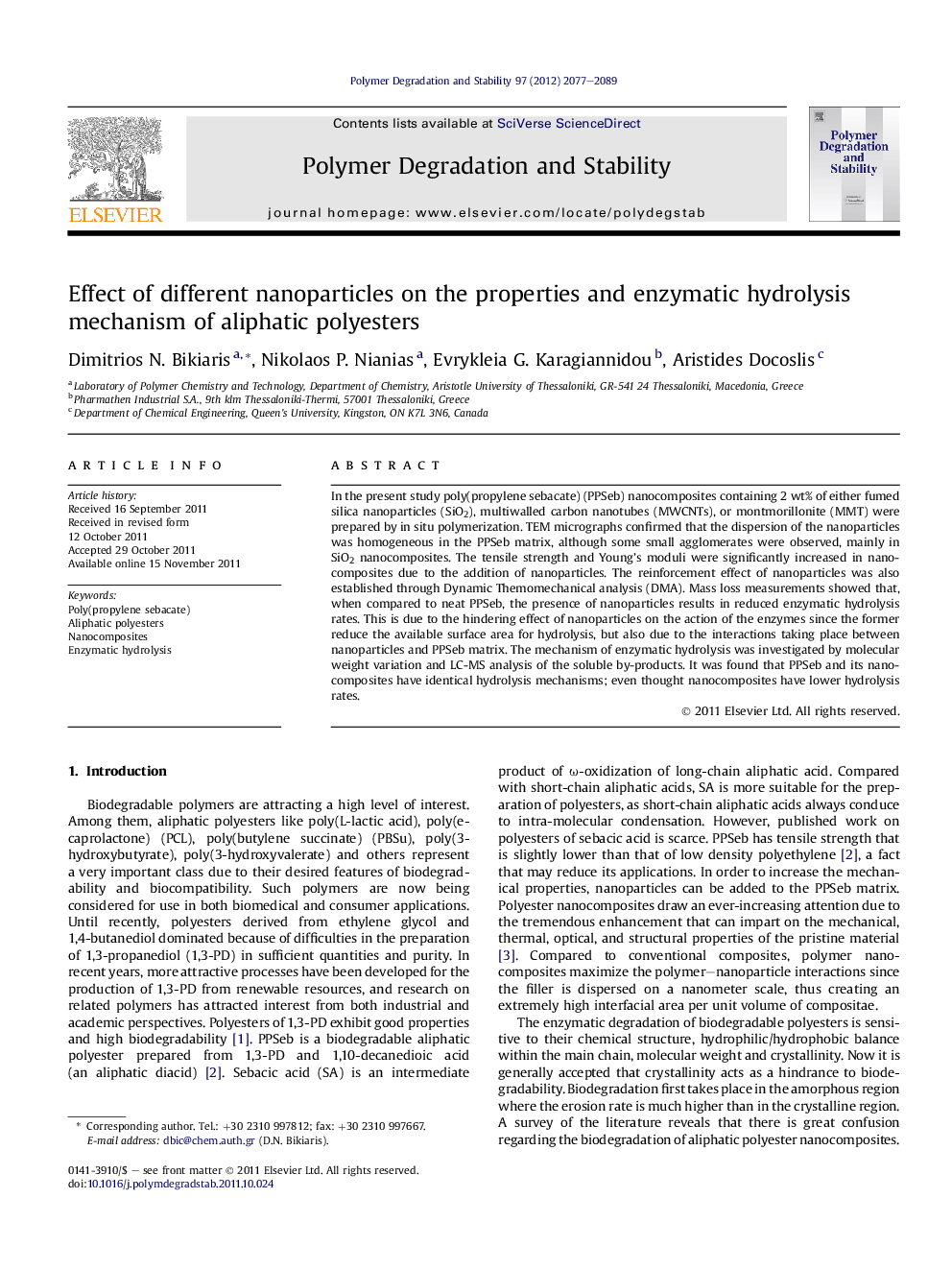| Article ID | Journal | Published Year | Pages | File Type |
|---|---|---|---|---|
| 5202330 | Polymer Degradation and Stability | 2012 | 13 Pages |
Abstract
In the present study poly(propylene sebacate) (PPSeb) nanocomposites containing 2Â wt% of either fumed silica nanoparticles (SiO2), multiwalled carbon nanotubes (MWCNTs), or montmorillonite (MMT) were prepared by in situ polymerization. TEM micrographs confirmed that the dispersion of the nanoparticles was homogeneous in the PPSeb matrix, although some small agglomerates were observed, mainly in SiO2 nanocomposites. The tensile strength and Young's moduli were significantly increased in nanocomposites due to the addition of nanoparticles. The reinforcement effect of nanoparticles was also established through Dynamic Themomechanical analysis (DMA). Mass loss measurements showed that, when compared to neat PPSeb, the presence of nanoparticles results in reduced enzymatic hydrolysis rates. This is due to the hindering effect of nanoparticles on the action of the enzymes since the former reduce the available surface area for hydrolysis, but also due to the interactions taking place between nanoparticles and PPSeb matrix. The mechanism of enzymatic hydrolysis was investigated by molecular weight variation and LC-MS analysis of the soluble by-products. It was found that PPSeb and its nanocomposites have identical hydrolysis mechanisms; even thought nanocomposites have lower hydrolysis rates.
Related Topics
Physical Sciences and Engineering
Chemistry
Organic Chemistry
Authors
Dimitrios N. Bikiaris, Nikolaos P. Nianias, Evrykleia G. Karagiannidou, Aristides Docoslis,
